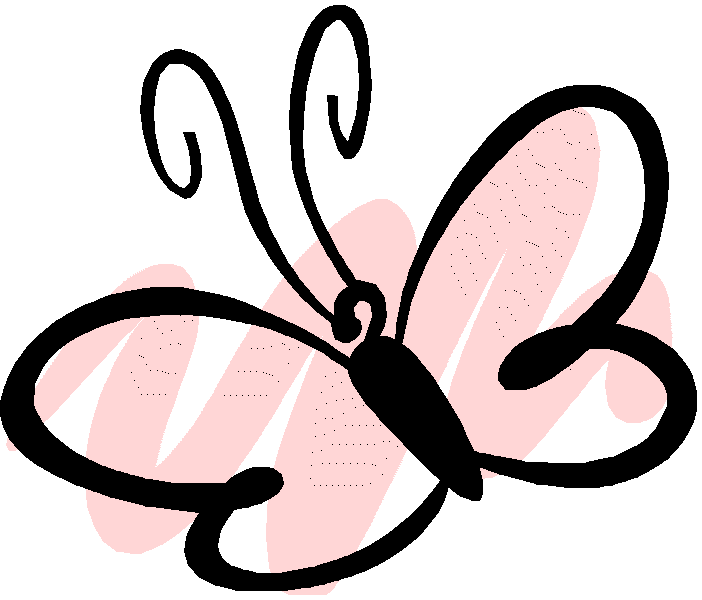Selection from
FAR FLOWING WATER
the newsletter of the Owashtanong Islands Audubon Society
THE ETHEREAL BUTTERFLY
by Judi Manning
 Ancient
people treasured butterflies and carved their images into stone and reckoned
them to be messengers from the gods. The British Museum has the oldest known
butterfly in its collection - two skippers from N. Carolina, dating back to the
1600s. Henry Walter Bates and Alfred Russel Wallace (a co- founder of the theory
of evolution with Charles Darwin) noticed Heliconius species in one region of
the American tropics often resemble each other; those in another region also
resemble each other BUT do not look like those in the first region. These
observations were the foundation of the study of mimicry. An example of Batesian
mimicry: edible Viceroys resemble inedible Monarchs, thereby protecting the
Viceroys.
Ancient
people treasured butterflies and carved their images into stone and reckoned
them to be messengers from the gods. The British Museum has the oldest known
butterfly in its collection - two skippers from N. Carolina, dating back to the
1600s. Henry Walter Bates and Alfred Russel Wallace (a co- founder of the theory
of evolution with Charles Darwin) noticed Heliconius species in one region of
the American tropics often resemble each other; those in another region also
resemble each other BUT do not look like those in the first region. These
observations were the foundation of the study of mimicry. An example of Batesian
mimicry: edible Viceroys resemble inedible Monarchs, thereby protecting the
Viceroys.
 Butterflies
and moths belong to the family Lepidoptera, (insects having scale-colored
wings). The hundreds of thousands of complex shaped scales are filled with
pigment that diffract light into the kaleidoscope of colors we see. The scales
near the base of the wings absorb sunlight to warm their flight muscles. They
must maintain high body temperature to stay active so they like to bask in the
sunlight while feeding. Did you know that handling a butterfly removes some of
the scales and the loss of scales can be fatal. Males and females locate mates
by responding to the bright-wing colors, striking wing color patterns and wing
movements. Males are usually brighter than females. Bright colors also advertise
to birds and other predators that the butterflies are just fluff: large wings
with a small body that is hard to catch and not worth their effort.
Butterflies
and moths belong to the family Lepidoptera, (insects having scale-colored
wings). The hundreds of thousands of complex shaped scales are filled with
pigment that diffract light into the kaleidoscope of colors we see. The scales
near the base of the wings absorb sunlight to warm their flight muscles. They
must maintain high body temperature to stay active so they like to bask in the
sunlight while feeding. Did you know that handling a butterfly removes some of
the scales and the loss of scales can be fatal. Males and females locate mates
by responding to the bright-wing colors, striking wing color patterns and wing
movements. Males are usually brighter than females. Bright colors also advertise
to birds and other predators that the butterflies are just fluff: large wings
with a small body that is hard to catch and not worth their effort.
Monarchs are now en route to Michigan from their winter home in Angangueo, Mexico, 2,500 miles away. Now is the time to think about attracting these beautiful butterflies, as well as swallowtails and skippers. Wildlands and wildflowers are constantly being replaced by housing and shopping areas and any nectar we can provide helps their dwindling population.
Butterflies are very fragile creatures. They need spaces that offer: SUNLIGHT, SHELTER from wind and rain; WATER -puddles, wet sand or mud. Each species requires specific FOOD PLANTS for caterpillars; and specific NECTAR plants for adult butterflies. Each species is attracted to the nectar of a few varieties of flowers and deposit their eggs on specific plants that contain the right chemical to nurture the feeding larva. In the spring, summer or fall, depending on the species, the female can pick the correct plant out of hundreds of plants in her habitat and place the eggs on the right part of the plant that is in the right stage of growth. The North American Euphilotes butterflyies live their entire life on the Eriogonum plant (Butterflies of NA, pg. 4). The larva eats the flowers and fruits, subsisting on only one or two parts of the plant; the adults sip the nectar, (20% sugar) with their tubular proboscis for energy and moisture By eating these plants, butterflies contribute greatly to weed control.
Some will accept overripe fruit, sugar water or honey water. Rick Mikula found that Monarchs prefer watermelon over natural nectars. He suggests placing a wedge-shaped , slashed piece of room temperature watermelon in a non-porous dish. OR Cut the melon into small pieces so the butterflies can make contact with all sides and put a plastic grate over the dish containing the melon. Clean the grate after each feeding.
Ron Boender, after retirement in 1988, grew over 400 nectar-producing and larval-food plants on his property in Florida. This soon evolved into Butterfly World, which has become the largest educational butterfly and breeding facility in the U.S.
The butterfly's brain is the size of a pinhead and contains a complex set of stimulators and regulators. It smells with antennae, tastes with its feet and has remarkably acute vision that enables it to zero in on preferred food plants. Their genetically inherited ability to carry out complex, instinctive tasks is superior to humans, but their ability to learn is not very well developed.
Leg and wing movement is controlled by ganglia along the ventral nerve cord. The adults' eyes capable of seeing the full color spectrum, are enormous and composed of hundreds of tiny eyes grouped together that are very sensitive to movement and color. However, they cannot adjust to distances or see detailed patterns or shapes very well.
The butterfly's smell and taste sense organs are scattered over the body.
Butterflies cannot hear very well but sense minute vibrations that indicate the
presence of predators. Their bodies, like all insects, have an external skeleton
which (1) strengthens their bodies and provides extra places for muscles to
attach to; (2) provides protection against falls and predators; and (3) reduces water lose due to
evaporation.
protection against falls and predators; and (3) reduces water lose due to
evaporation.
A butterfly lays 100 eggs, but perhaps only one will live to butterfly stage. The rest are done in by parasites, fungus, wasps, other predators, or fungus which reduces their food source. Eggs hatch into caterpillars that grow and pupate. The pupas (chrysalis) emerge as adults when the environmental conditions are suitable. Encased in the chrysalis, a structural transformation takes place from a worm-like caterpillar to a fragile, winged adult. When the adult emerges, the wings are still small and limp, but within 30 minutes body fluids pump them up to full size. The veins and surface quickly stiffen to provide needed structural support to fly away. Metamorphosis allows the larva and adult to live in two different environments. The first as an insatiable eater and the second as a short-lived, wide-ranging parent. Adult butterflies spend most of their lives in some aspect of reproduction.
A butterfly's generation is from egg to adult. A generation for most flower and fruit feeders, is one month, with many generations each summer; leaf feeders, six weeks to two months; grass feeders two to three months; root eaters, six months. The arctic/alpine species have a two to four year life cycle. Staggered emergence of the males and females take place for maximized matings . The first butterflies seen are males, both males and females in the middle of the flight and females at the end.
"the caterpillar [larva] is the feeding machine, with large jaws and small, simple eyes, a huge gut, six true legs and ten false legs or prolegs, each proleg equipped with tiny hooks. As it crawls, the larva spins silk threads on the larval host plant and hooks its prolegs into the silk threads." (Butterflies of NA, Pg 4). If a young caterpillar falls off, it will die. The larva prefers cooler temps. (68-84 F), feeds voraciously and grows by shedding its skin and head capsule four or more times.
Butterfly wings flap 5-20 times per second. The flight patterns of individual species greatly differ. Two flight patterns are used to locate a mate: Perching behavior: the male perches somewhere and darts out at passing animals, leaves, etc. to get a closer look to determine if it is a mate. Females fly to the same place and flutter until found by a male. Patrolling behavior: the male searches for a female by constantly flying.
Butterflies are cold-blooded and are affected by the climate. They only fly during warm, sunny periods and become inactive when the clouds cover the sun or when it is cold. They can fly when the temperature range is 60-108 F, but display aberrant behavior at either extreme. The ideal internal body temperature is 82-100 F. In late afternoon adults seek places to spend the night, usually at the tops of small trees, shrubs or other plants to avoid mice and early morning birds. During rain, they may roost alone under leaves or crawl into clumps of vegetation.
Butterflies do not adapt well to human environments. Individual butterfly species are restricted in their habitats, have specific plant needs and when the plants disappear due to habitat destruction, they decline. Butterfly habitats include bare rocks with vegetation growing between them, to grassy, alpine tundras, bogs, dunes, etc. Temperature and precipitation are the major factors in determining the distribution of butterflies and the size of the population. Fifteen North American species were federally listed as endangered in 1994, with 70 more as candidates for the U.S. Endangered Species Act. Backyard gardens probably will not attract the butterflies that are in trouble, but will help maintain the population size of the more common butterflies.
In addition to pollinating flowers, butterflies are an important part of the food chain, contribute to medical and botanical research on hereditary characteristics and provide scientists with the opportunity to study insect variation, fertility, population dynamics and evolution. They also serve as sensitive ecological indicators, revealing the health or ills of the habitats where they live, and thus, their fellow inhabitants. (The Butterfly Garden)
 Butterfliers
(butterfly watchers) crouch over a bush, peering into its depths through their
binos. They watch the butterflies with close-focusing binos to observe as much
detail as if they were holding a mounted specimen. This is a fairly new,
fast-growing, nature-based activity. Butterfly zoos - 'aviaries' designed as
rain forests where visitors walk through to see the huge butterflies of the
tropics, are increasing. Carl and I saw the first release of butterflies at the
Frederik Meijer Gardens in mid-March. They had an 'emergence case' with rows of
chrysalises and released the butterflies periodically into the interior portion
of the Gardens where they flew around the visitors. The butterflies were resting
on ferns, underneath leaves, on flowers. This was a very impressive exhibit.
Butterfliers
(butterfly watchers) crouch over a bush, peering into its depths through their
binos. They watch the butterflies with close-focusing binos to observe as much
detail as if they were holding a mounted specimen. This is a fairly new,
fast-growing, nature-based activity. Butterfly zoos - 'aviaries' designed as
rain forests where visitors walk through to see the huge butterflies of the
tropics, are increasing. Carl and I saw the first release of butterflies at the
Frederik Meijer Gardens in mid-March. They had an 'emergence case' with rows of
chrysalises and released the butterflies periodically into the interior portion
of the Gardens where they flew around the visitors. The butterflies were resting
on ferns, underneath leaves, on flowers. This was a very impressive exhibit.
Butterflying is quite different than birding, according to Jeffrey Glassberg, who founded the North American Butterfly Society. He says butterfliers tend to have a "more general and profound interest in nature than birders because you're really in the muck of things, always looking down, noticing what's around your feet - grasses, ferns, flowers, spiders, beetles, the quality of the earth itself. All of this is important because butterflies are actually living there". (Pg 34 Stalking) Approach butterflies from the side so they will not mistake you for a predator. On a good day, they can identify up to 50 species. Butterfliers also have life lists and they conduct a species count each year. The best field guide is the Golden Nature Guide, Butterflies and Moths, which identifies caterpillars, the gender of adults; food plants and territorial ranges.
Annual migration starts in Sept., triggered by day length. Unlike birds who follow well defined fly-ways, butterflies fly due south from their summer-time nesting grounds. All of them tend to congregate on the northern shores of major lakes where they rest and feed before crossing. There are numerous places in Canada where large numbers of migrants can be seen. They include The Bay of Fundy, the entire St. Lawrence River, the Reifil Sanctuary in British Columbia, Pt. Pelee and Presqu'ile.
In order for a species to have a successful migration, it takes many generations. For example, the first generation of Monarchs have long flights and migrate far northward; the mid-summer generations are sedentary; the third generation flies south.
To learn more about butterflies, send a self-addressed, stamped envelope to the Xerces Society, 10 S.W. Ash Street, Portland, OR 97204, or purchase Landscaping for Wildlife by Carrol L. Henderson. Ranger Steve Mueller at Howard Christensen Nature Center is also a local contact for butterfly information.
References for other articles that follow also
Butterfly Beauty, Margaret Haapoja, Mature Outlook, 6/95, pg. 58
Gardens for Butterflies, Pamela Nelson, Michigan Natural Resources, March/April,
1992, Pgs. 27-31
Heading South, MacLeans, 9/18/95
How to Feed a Visiting Monarch, Mark Wexler, National Wildlife, 8/7/94, Pg.
14-21.
Make Your Garden Fit for Birds, Butterflies, Kathy Bush, GR Press N'West,
3/9/95, Pg. 13
Stalking the . . . Great Spangled Fritillary?, George Plimpton, The New York
Times Magazine, 9/3/95, Pgs. 38-41.
The Butterflies of North America, a Natural History and Field Guide, James A.
Scott, Stanford Un. Pres, 1986.
The Butterfly Garden, Mathew Tekulsky.
From the Internet:
Giants and Tigers and Zebras, Oh My! Butterfly Farming Information or How
Recycling can Save Thousands of Lives and Cure Insomnia, Rick and Claudia
Mikula, reprinted from Environment PA, July/August, 1993.
Monarchs and Watermelons, Rick Mikula, Web Naturalist.
Copyright © 1996 Owashtanong Islands Audubon Society. All rights reserved.

